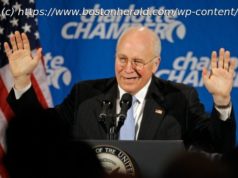Mr. Agee’s relationship with a female subordinate, Mary Cunningham, raised issues of gender and behavior in the workplace that resonate today.
William Agee was 38 and a rising corporate star in 1976 when the Bendix Corporation, a large auto parts maker, made him one of the youngest chief executives of a major American company.
Handsome and articulate, with an M. B. A. from Harvard, Mr. Agee personified a new, more fast-moving, less bureaucratic management style that was starting to take hold. He got rid of Bendix’s boardroom table as a stodgy artifact of the past, banned executive parking spaces and often dressed in a style now known as business casual.
Three years after he took the reins at Bendix, Time magazine featured him in a cover article with the headline “Faces of the Future.” He was personally appealing, and so was his message: Success at his company should be based on merit rather than seniority or tradition. He acted on that notion by recruiting and promoting young managers.
As it turned out, it was a recruiting decision — the hiring in spring 1979 of a bright, promising female employee named Mary Cunningham — and Mr. Agee’s subsequent handling of their relationship that largely defined his business career, touching off a national discussion about workplace behavior that reverberates today.
Mr. Agee died on Wednesday at the Swedish Hospital in Seattle. He was 79. His daughter Suzanne Agee said the cause was respiratory failure as a complication of scleroderma, a degenerative disease in which the immune system harms healthy tissue.
Mr. Agee originally hired Ms. Cunningham, who also had a Harvard M. B. A., as his executive assistant. She quickly moved up the ranks at Bendix, becoming vice president for strategic planning within 15 months.
Soon after that, however, she was forced to leave the company under pressure amid allegations that she and Mr. Agee were having an affair — something they both denied. They later divorced their spouses, and they married in 1982.
Ms. Cunningham’s abrupt departure from Bendix provided fodder for months of newspaper and magazine articles and commentary. The author Gail Sheehy wrote a syndicated newspaper series titled “The Saga of Mary Cunningham.”
In her book “Powerplay: What Really Happened at Bendix,” written with Fran Schumer and published in 1984, Ms. Cunningham denied that she and Mr. Agee had a sexual relationship until after she left the company. But she admitted to being “very naïve” and said she had miscalculated the strength of gender stereotypes inside the company.
“It was my very competence that threatened them,” she wrote.
Although the episode differed in key respects from the current wave of sex-related office scandals — the question then centered on romance-fueled favoritism, not harassment or assault — it helped lay the foundation for the current debate over gender and behavior in the workplace, especially the dynamics involved when one of the people in a relationship is the boss.
Peter Cappelli, director of the Center for Human Resources at the Wharton School of the University of Pennsylvania, said the drama that swirled around Mr. Agee and Ms. Cunningham at Bendix had “a big effect, especially on boards” at large public companies. In recent years, Mr. Cappelli noted, boards have pushed out senior executives at corporations including Best Buy, Boeing and Hewlett-Packard for inappropriate behavior, typically affairs with subordinates.
William McReynolds Agee was born on Jan. 5,1938, in Boise, Idaho. (He later changed his middle name to Joseph.) His father, Harold J. Agee, held various jobs, including manager at a manufacturing company, dairy farmer and state legislator. His mother was the former Suzanne McReynolds.
Mr. Agee paid his own way at the University of Idaho while working in a supermarket’s accounting department. After graduating from Harvard Business School, he joined the paper company Boise Cascade, earning a series of promotions and becoming chief financial officer at 31.
He joined Bendix, which was based in a Detroit suburb, in 1972 and thrived immediately. He was named chief executive when W. Michael Blumenthal, his predecessor, left the company to become Treasury secretary under President Jimmy Carter.
Bendix performed well under Mr. Agee at first, although his relationship with Ms. Cunningham raised questions about his judgment. His strength was mainly in finance. Increasing the value of a company’s shares, he wrote in an Op-Ed essay in The New York Times, is “the foremost objective of responsible management.”
To that end, he pursued asset sales, investments and mergers. But even as a deal maker, he was occasionally dogged by the public perception of his ties to Ms. Cunningham.
When Bendix purchased a 5 percent stake in RCA in 1982, RCA rebuffed the move. “Mr. Agee,” RCA said, “has not demonstrated the ability to manage his own affairs, let alone someone else’s.”
Ultimately, an ill-conceived takeover attempt that year led to Mr. Agee’s departure from Bendix.
Seeking new markets, he bid for the rocket maker Martin Marietta. In what The Times described as “one of the most bizarre takeover battles in American corporate history,” Martin Marietta responded by trying to take over Bendix.
Throughout the six-week campaign of corporate warfare that ensued, Ms. Cunningham Agee, who was married to Mr. Agee by then and had joined Seagram & Company as vice president of strategic planning, was a full-time though “informal” adviser to her husband, she told The Washington Post. They would hold daily meetings that started at 6 a.m. at the Helmsley Palace Hotel in Manhattan, a few blocks from her office at Seagram, and would often go on nearly around the clock.
Asked about her role, she told The Post: “What was I supposed to do? Retire into the bedroom like the dutiful wife?”
The fight ended with Bendix being bought by Allied Corporation, now Allied Signal. Mr. Agee left the merged company in 1983.
In 1988, he was back as a chief executive, this time at Morrison Knudsen, a construction company with headquarters in Boise that was known for building bridges, factories and dams. It was losing money when he took over, and he made a bet on moving into rail cars and locomotives. The plan looked promising for a while, but the big contracts to rebuild America’s rail and public transit networks, which Mr. Agee was counting on, did not materialize. The board fired him in 1995.
“Did he make mistakes? Yes, he did,” Ms. Cunningham Agee, who now runs a family winery and a charity, the Nurturing Network, said in an interview on Saturday. “Did he take risks that I thought were too big? Yes.” But, she added, his successes were a result of his unshakable persistence and commitment.






